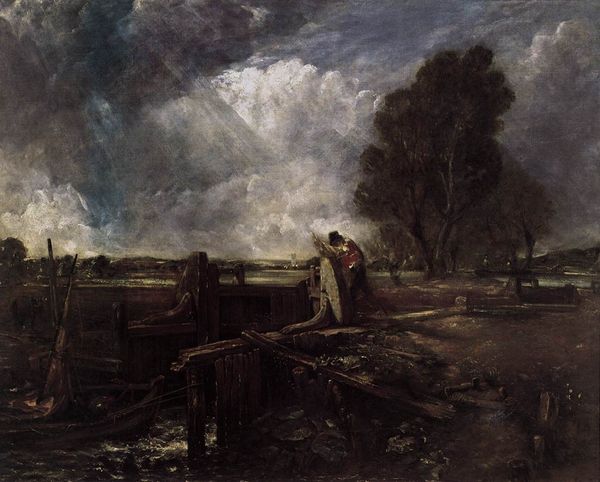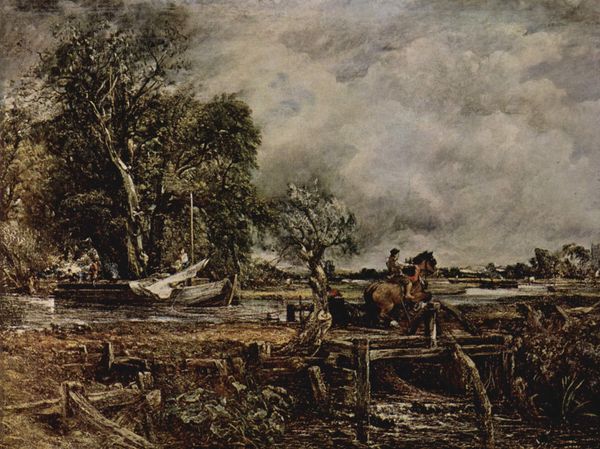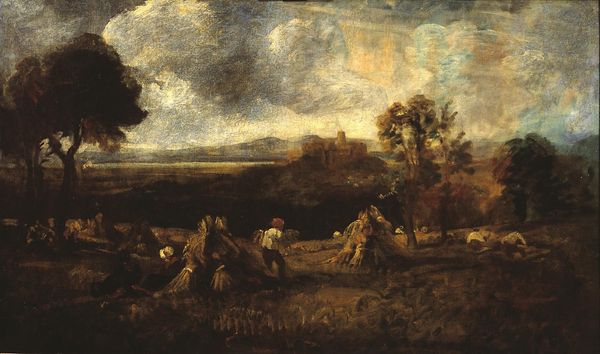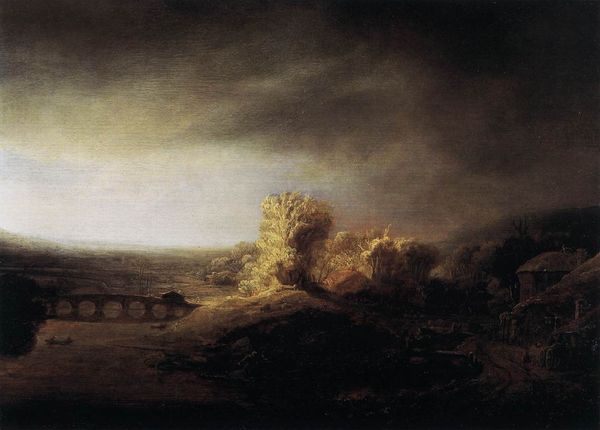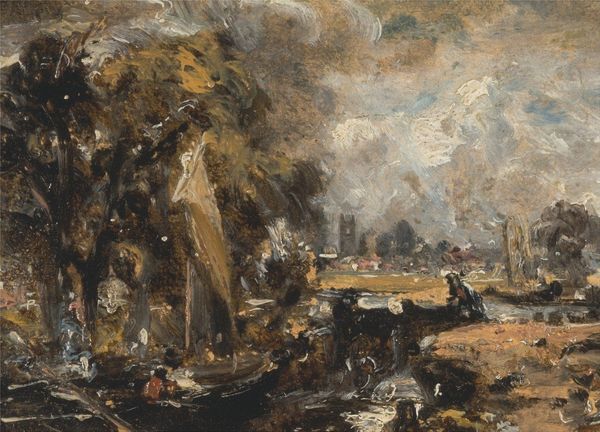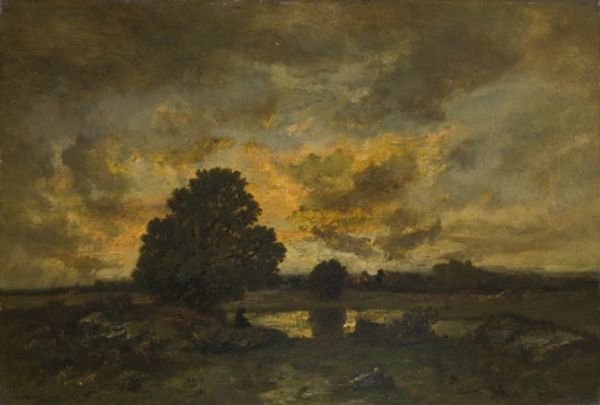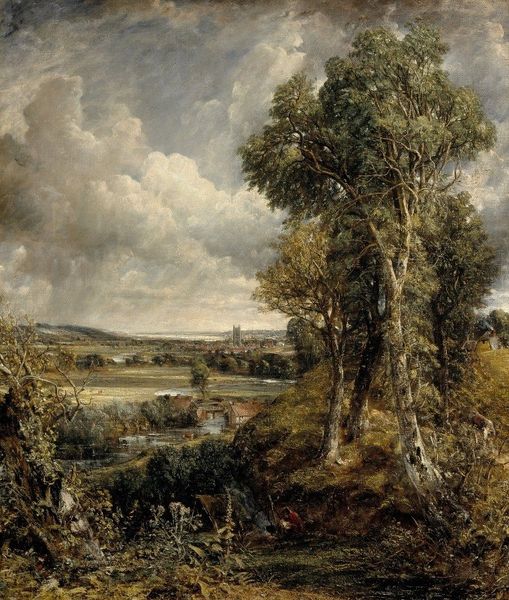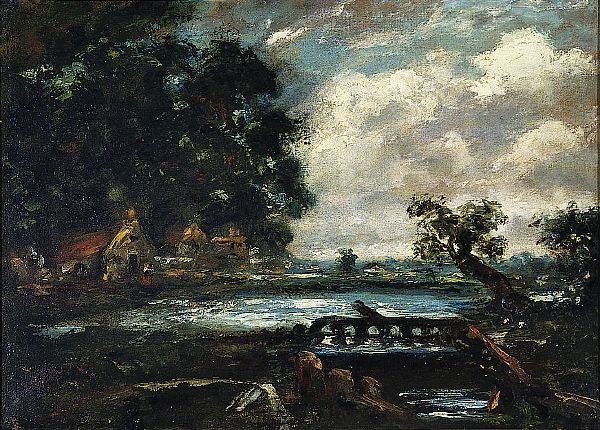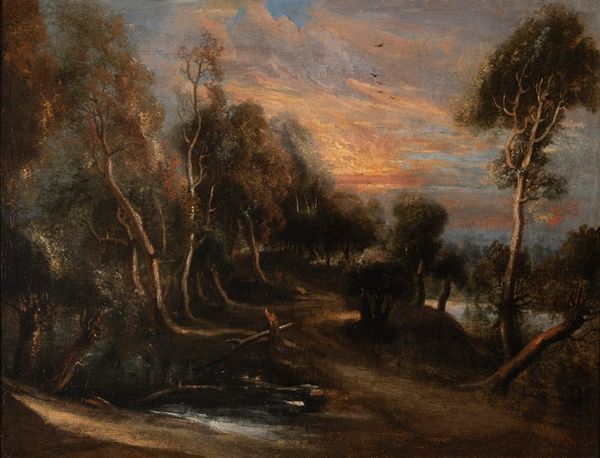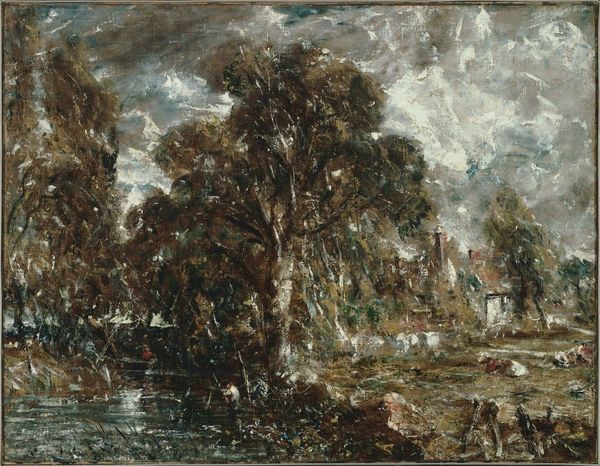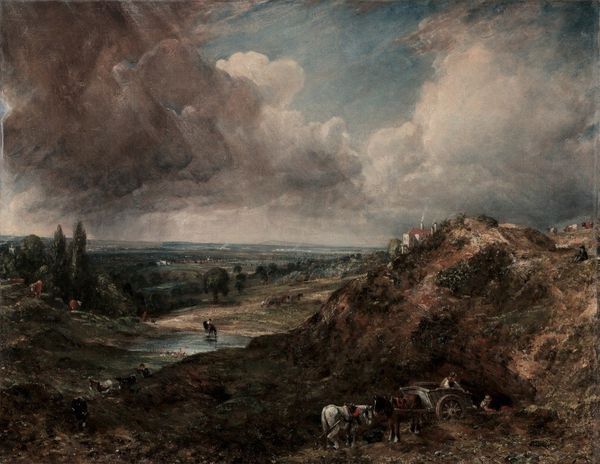
painting, oil-paint
#
tree
#
sky
#
animal
#
painting
#
oil-paint
#
landscape
#
river
#
romanticism
#
horse
#
water
Dimensions: 129 x 188 cm
Copyright: Public domain
Curator: Looking at this work by John Constable, "Sketch for The Leaping Horse," created in 1824 using oil paints, I immediately sense a dramatic atmosphere. Editor: Indeed. My initial impression is of turbulent energy, of movement caught mid-leap. It almost feels performative, this rendering. Are we seeing more than just a horse crossing a stream? Curator: I believe so. Constable's art wasn’t just about faithful representation. During that period, landscape painting was becoming a powerful tool for expressing national identity and social ideals. This seemingly simple scene also subtly highlights the rural labor and industry prevalent in early 19th-century England. Notice how the composition pulls us in—we’re meant to be part of the narrative. Editor: The horse, then, acts as more than just an animal—perhaps embodying freedom or even untamed nature amidst the pressures of the period. I am captivated by the brushwork, it's loaded with a feeling of urgency; those swift strokes across the canvas certainly evoke a visceral reaction. The dark and bright contrasts almost have a subconscious impact. What is he conveying, setting his painting this way, politically speaking? Curator: Constable wasn't overtly political like some of his contemporaries. Rather, he captured an idealized vision of rural life, perhaps as a subtle counterpoint to the burgeoning industrial revolution and growing urbanization. This river crossing might also reference a disruption to that way of life. Note the presence of other labourers and a partially wrecked boat to the left of the Leaping Horse. He suggests this rural landscape also involved more mundane disruptions to daily labour than a leaping horse. Editor: I notice, how the symbols resonate – water suggesting purification, the horse a sign of forward movement but here almost struggling within its confines. Considering that period, might this also serve as a coded message of defiance, albeit a romantic one, given that so many people in his paintings of rural landscapes end up stuck in the old way of doing things? The iconography is charged. Curator: It's a beautifully ambiguous message, isn’t it? The beauty is certainly evident but perhaps tinged with something less comfortable. And it underscores the role art plays in reflecting the changing societal landscapes, and occasionally, pushing gently against their accepted forms. Editor: I agree. I appreciate the way in which Constable brings these conflicting concepts together.
Comments
No comments
Be the first to comment and join the conversation on the ultimate creative platform.
